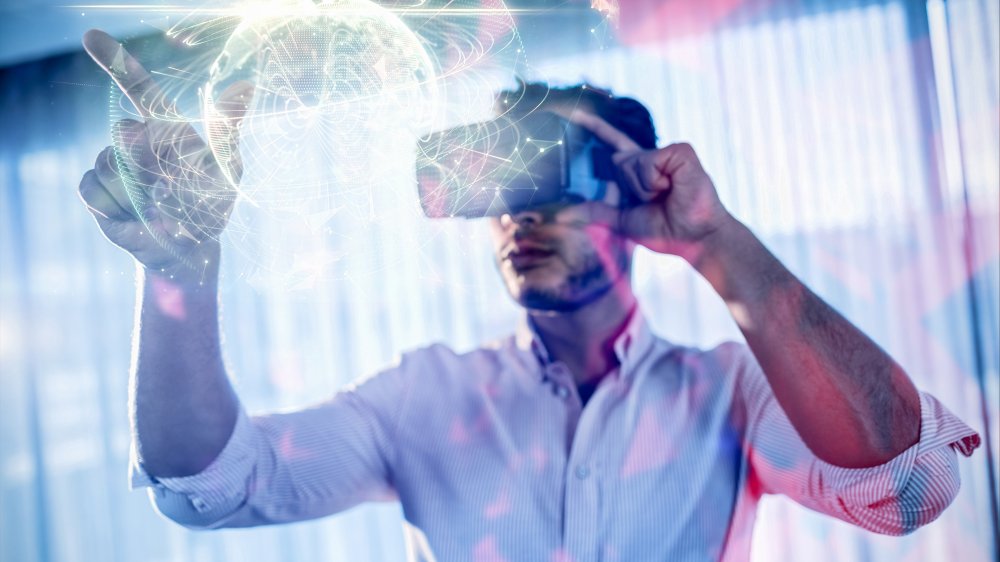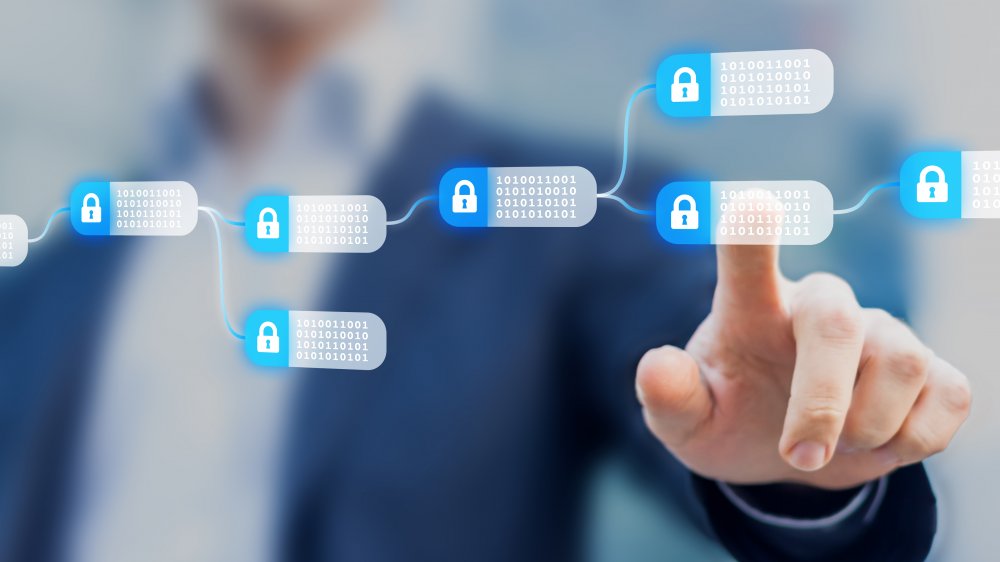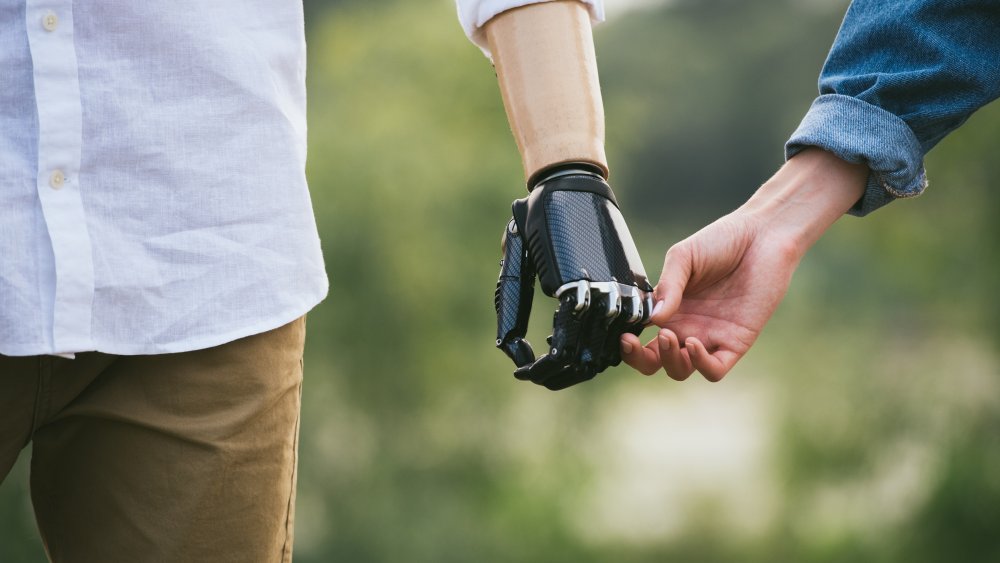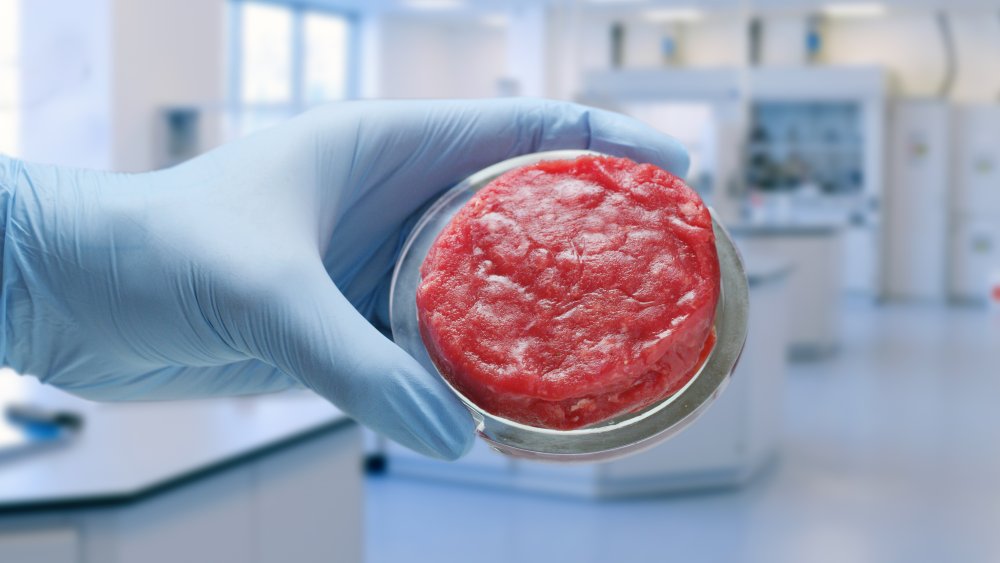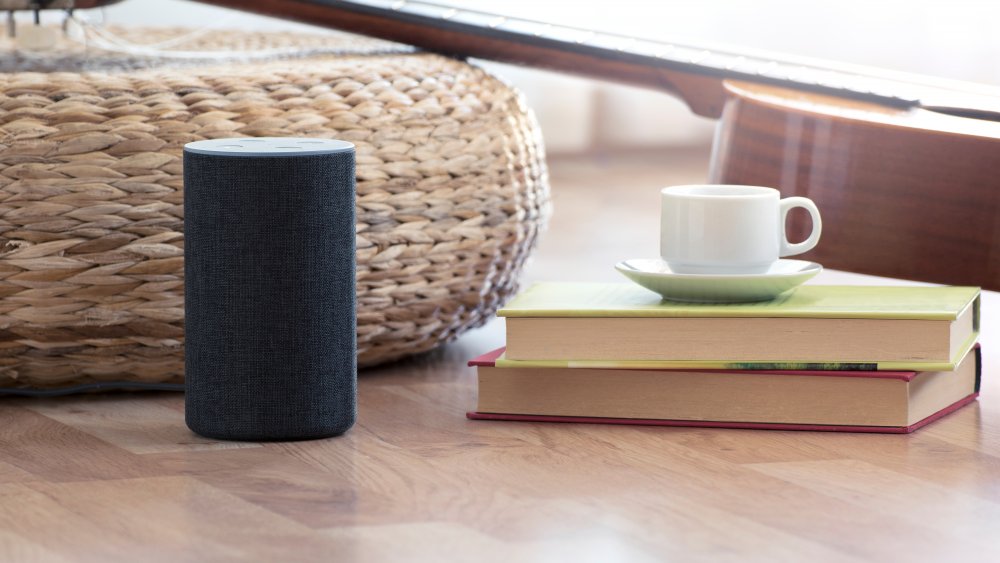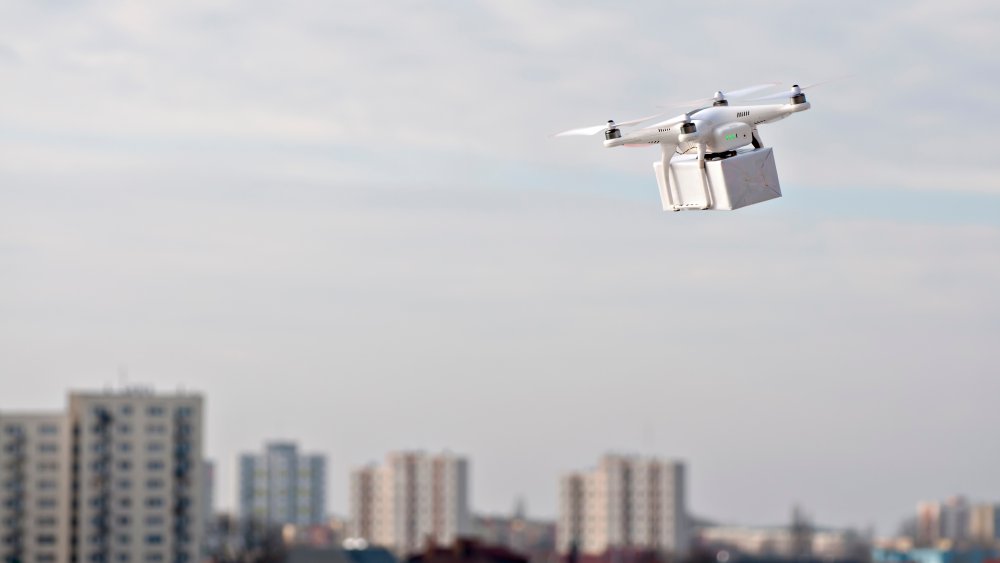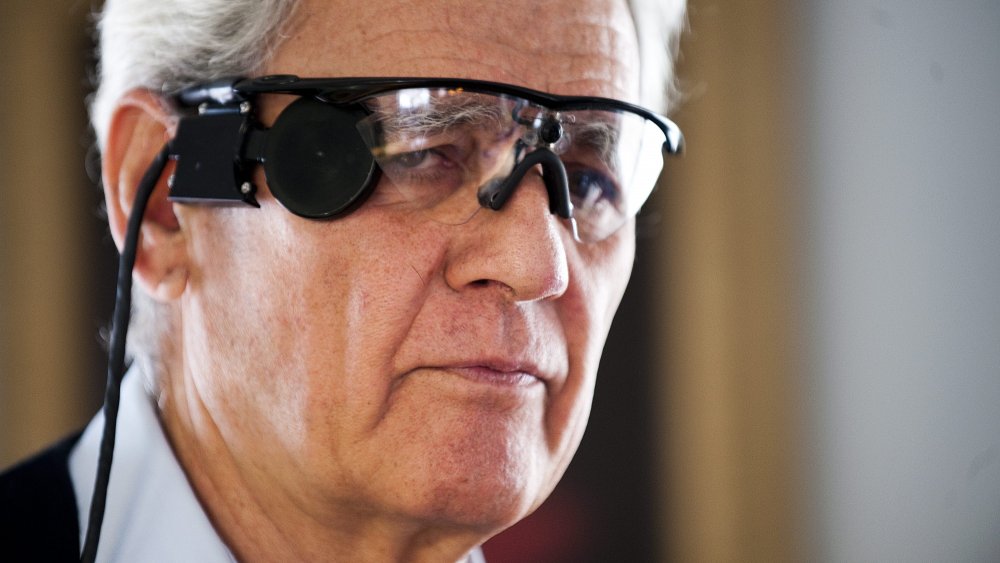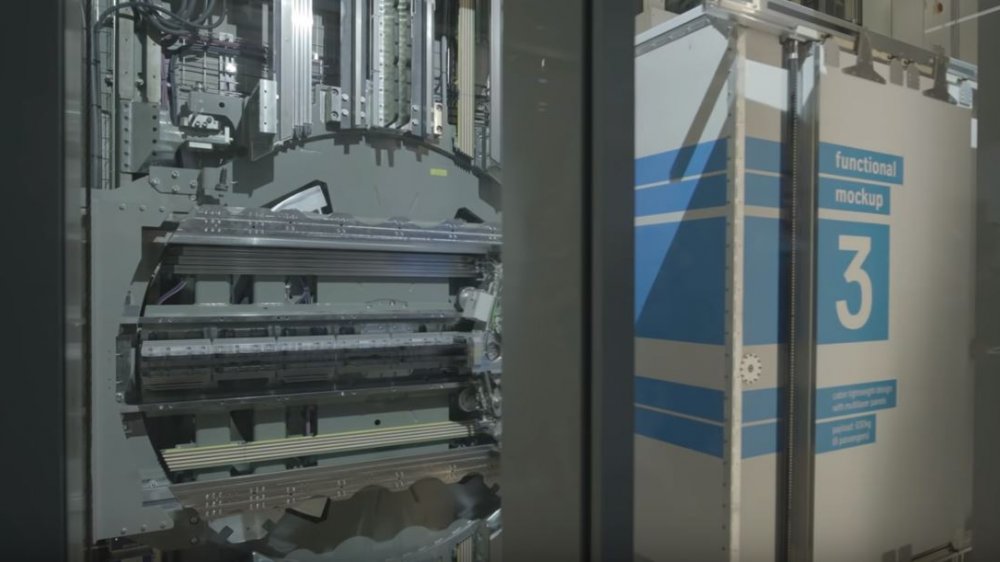The Greatest Inventions Of The Past Decade That Changed Everything
It's been a crazy decade. Back in the stone ages of the 2000s, humankind was barely figuring out flip phones, the monstrous behemoth known as "Facebook" hadn't yet memorized your face, and regular people still paid for cable TV subscriptions. Needless to say, things have changed.
Looking back, though, it's interesting to track the massive inventions of the past decade. These breakthroughs, some of which haven't yet gone wide, are redefining (or will redefine) society as you know it. And while many of today's more recent "inventions" were actually developed years and/or decades ago, well before their contemporary popularity — here's looking at you, 3D printers and electric cars — listed here are the crazy developments that only truly sparkled to life during the 21st century's "teenage" years. Buckle up, laypeople, because if you thought these past 10 years were a wild ride, the next 10 are going to be absolutely nuts.
The age of virtual (and augmented) reality has only just begun
The concept of virtual reality universes have fed sci-fi stories like Snow Crash and The Matrix for decades, but it wasn't until the 2010s where this technology transformed from a cool "What if...?" into a moneymaking juggernaut. The Oculus Rift kicked down the doors in 2012, according to the Smithsonian, proving that the technology finally existed to make VR games a reality. Meanwhile, the field of augmented reality, or AR, now fuels mainstream mobile games like Pokémon GO.
This is only the beginning. Like cinema in the early 20th century, artists have barely started exploring the possibilities of VR and AR as new storytelling mediums. As explained by ZDNet, VR could completely revolutionize the medical field, particularly in regard to surgeries, bringing to life new methods of training, experimentation, and so on. AR, meanwhile, could change the everyday driving experience, as NBC News points out, by showing the driver a "heads up display" in any direction they look, potentially warning them about pedestrians, fuel levels, flat tires, braking distance, and other hazards, like a real life version of Iron Man's JARVIS. Augmented reality glasses could also become a part of the average shopping experience, thereby making your Food Lion runs a little more like shopping on Amazon, and they could also become a workplace tool, by essentially replacing your smartphone. Watch out, world.
Bitcoin is one thing ... but blockchain is another
It's funny, really. Back when Bitcoin hit the scene in 2009, according to CNN, thereby inventing "cryptocurrency" — a virtual form of currency, secured by cryptography — everyone was so excited by the idea of government-free, bank-free, digital money they barely noticed the fascinating new blockchain technology that made it all work. Over the course of the decade, though, it was blockchain that changed the world ... even if it is, admittedly, confusing as hell to explain.
As Investopedia explains, blockchains are decentralized systems which record any transactions using the currency at hand (I.E., Bitcoin). These "blocks" form a protected "chain," created in such a way that all transactions are recorded, but cannot be deleted or falsified, meaning transactions can take place without the bank as an authority (big, deep breath!) Basically, everything's there, and nobody can tamper with the evidence. Get it? But it goes beyond money. In theory, blockchain can create a public central database for medical info (doctors won't have to fax things over anymore), it can massively improve cyber-security, ensure charity funds are used appropriately, and cut the BS out of government bureaucracy.
These days, while new cryptocurrencies pop up every day (see Dogecoin, Ethereum, etc.), blockchain racks up increasingly huge investments from massive companies across the globe, even including traditional banks, according to Forbes. So, while Bitcoin was certainly an innovative creation, blockchain is like the Starscream to Bitcoin's Megatron: in other words, always showing up the big guy, where it counts.
From poop to clean drinking water
Back in 2015, according to NPR, Bill Gates made everyone watch him drink a nice, tall glass of clear water. Now, Gates has certainly drank a lot of water in his life, but what made this particular cup special was that it was, in fact, created from human poop. Yes, poop.
The Janicki Omni Processor, funded by the Gates Foundation, has a name that makes it sound like some kind of deadly cyborg from the Robocop universe. However, it could be one of the greatest innovations in history, when it comes to reducing poverty, disease, poor sanitation, and other health concerns across the world. What the Omni Processor does, essentially, is devour sewer waste. Said fecal matter is then boiled, separated into solid matter and water vapor, and then processed through a cleaning system that removes all contaminants ... thereby resulting in water so fresh, so clean, you could bottle it. The solid waste, meanwhile, gets turned into the fuel that powers the machine. Good stuff.
Now, sure, water made from poop might not sound appetizing, but it works: the pilot program was launched in Senegal in 2015, and just four years later, it had successfully transformed 700 tons of poop into both usable drinking water and energy, according to Global Citizen. That's a big deal, because when clean drinking water is brought to struggling countries, it leads to less sickness, less deaths, and thus improved opportunities and a higher quality of living.
In the past decade, ridesharing apps changed the world
Remember how annoying (and expensive) it was to hail a taxi back in 2009? Those days are over, ever since Uber hit the scene. Originally called UberCab, according to Business Insider, this company invented what is today known as the ridesharing app, a technology that makes hailing taxis as easy as punching a few buttons on your smartphone. Launched in 2010, over the course of the decade Uber has grown so popular, and spawned so many successful competitors — from direct imitators like Lyft, to more targeted offerings like Wingz — that ridesharing apps have disrupted the entire public transportation industry, led to protests, and even given a stressed out former X-Man a job in a dystopic future (hi, Logan).
The convenience of ridesharing is a big enough explanation for why it's grown so fast, but as Inc. points out, when you combine the cheaper prices, the human connections formed between drivers and passengers, and the reduced congestion, it's no wonder that everyone has at least a couple of these apps on their phone today. While Uber has faced some big controversies in recent years due to a toxic workplace culture, according to Quartz, the company also grown into a service that delivers food, has luxury options, and someday soon, may be one of the pioneers of the burgeoning self-driving car industry.
Prosthetic hands can now generate a sense of touch
Artificial limbs are nothing new, but as Business Insider points out, they've certainly come a long way. From the wood and bronze limbs of the B.C.E. era, to the metal hands of the 16th century, and onto the development of battery-powered myoelectric prosthetics (which respond to electrical signals from the muscles), every century has seen artificial limbs take another leap forward. But the persistent problem was the matter of physical touch: while you can make a prosthetic limb capable of grabbing things, it's far more difficult to make it so the person wearing it can feel said object, through their prosthetic, as if it were flesh and blood.
Well, in 2018, engineers at John Hopkins had a breakthrough, according to Phys.org. Through careful research and development, they invented an electronic skin, called an e-dermis, containing biosensors that replicate the touch and pain receptors found in the biological version, which are then electronically connected to the nerves which relay these touch sensations to the brain. When the researchers placed the e-dermis over the fingers of a prosthetic hand, it generated the long-lost sense of touch for the amputee test subject, according to Science Daily: "After many years, I felt my hand, as if a hollow shell got filled with life again."
As the team works on including new sensations into the skin, such as temperature perception, there is also discussion of creating a version to be used for astronaut gloves, to make their outer space work more efficient.
The meat of the future will come from a test tube
Beef tastes great, and most Americans love a good hamburger, but those juicy flavors won't save anybody from the devastating impacts of climate change ... which, unfortunately, is worsened by the greenhouse gas emissions produced by cows, beef production, and so on, according to the World Resources Institute. When you combine these facts with the horrific, inhumane conditions animals suffer due to factory farming, it really proves how badly the world really needs a decent substitute for old fashioned cow meat.
Now, sure, traditional veggie burgers have been around for a long time, but honestly, do those taste like real burgers? Of course not. However, everything changed at the tail end of the 2010s, thanks to the invention of delicious, meat-free meats made by companies like Beyond Meat and Impossible Burger, according to Vox, marketed to carnivorous consumers rather than vegetarians.
However, a bigger change is on the horizon, as explained by Gizmodo, and that's lab-grown (or cell-based) meat. These meats are grown in a lab, and thus involve no animal cruelty. Yet, on a cellular level, they are 100 percent meat. The first cell-based hamburger was eaten in 2013. It didn't taste great, and cost $330,000, but since then, researchers have further developed the technology, and while experts predict it might be a while before grocery aisles are filled with lab-grown meat just as tasty as cow carcass, this invention will eventually shake up the entire meat industry.
Interactive smart speaker are in your home, listening
All too often, the coolest tech innovations also end up being the scariest. For proof of this, look at the rise of the interactive smart speaker ... or as you know her, Alexa. While smart speakers aren't necessarily the most groundbreaking invention in history, they have made many a Star Trek fan's dreams come true. The Amazon Echo pioneered the whole shebang with its release in 2014, according to Vox, opening the floodgates for the Google Home and other imitators to come pouring in: now, as the decade draws to a close, NPR reports that 53 million adults in the United States, or 21 percent, have a smart speaker in their homes in 2019. Marketing Land adds that of these households, 52 percent boast two or more devices in their homes. So yeah, that's a a whole bunch of people asking Alexa to play "Take Five," fiddle with the lights, or switch TV channels.
Unfortunately, cool as this seems, Alexa (and her digital friends) have another hobby that people are less comfortable with: listening to your every conversation, and recording it. Oof. Growing privacy concerns have reached the point, according to Marketing Land, where it is hurting the smart speaker market, and even causing current owners to talk to their mechanical buddies a little less. Sorry, Alexa, maybe you should've been a bit less nosy.
Your mailman is a delivery drone
If you were hopping around in time, you know one easy way to figure out you're in the late-2010s? Drones, drones, and more drones. The military drones are the ones you see in the news, and your friend sometimes snoops on your backyard with his camera drone, but for many industries, the most interesting innovation in drone technology has been the (literal) takeoff of delivery drones. Back in 2013, Jeff Bezos astounded the world by releasing a concept video of an Amazon drone delivery, according to Digital Trends, and the retail company has been developing this technology ever since. In 2019, the Verge reported that Amazon claims they'll soon have fully electric drones which can deliver five pound packages, with a range of 15 miles. Amazon now claims their drone prototypes are as safe as commercial aircraft, but they'll have to get FAA approval before they take off in a neighborhood near you.
Now, that's swell news for a major corporation like Amazon, but what about the everyday person? As it happens, drone deliveries could save lives, according to NPR, if they are used to make high-speed medical deliveries, particularly in rural communities where patients might be many miles from needed healthcare supplies.
Restoring sight to the blind
You might not realize it, given the general doom and gloom of the news, but the past decade has seen major positive advances, especially when it comes restoring sight to millions of people in the world who experience severe visual impairment. Back in 2011, ZDNet explained that the bionic glasses worn by Elias Konstantopoulus, pictured above, worked in tandem with a microchip implanted in his eye to show him flashes of light — a big accomplishment, since a diagnosis of retinosa pigmentosa had previously rendered him blind — and in ensuing decade, this so-called "bionic eye" technology, more properly known as Argus II, has continued improving. In 2015, according to the University of Manchester, scientists successfully completed the first bionic eye implant on a patient whose blindness was caused not by retinosa pigmentosa, but standard age-related macular degeneration. By 2019, John Hopkins Medicine reported that the implantation procedure had become increasingly standardized, and advanced, to the point where the Argus II now brought a fuzzy, pixelated black and white form of vision to blinded individuals, so advanced they could see waves rolling down the beach.
Another key invention has been the eSight 3, a pair of wearable electronic glasses resembling the VISOR in Star Trek, which has proven life-changing to those with conditions like Stargardt disease, according to CNET.
Proper preemie predictions save lives
Infant mortality is a depressing subject, but it's something that needs to be discussed, and one of the most dangerous things that can happen during a pregnancy is for it to end prematurely. When a preterm infant — or a "preemie" baby, as they're often called — arrives into the world, not quite ready for it, they suffer increased risks of infection, vision and hearing problems, and learning disabilities. Of the 15 million preemies born every year, many die, to the point where preterm birth is ranked as the single most common cause for deaths of children under 5-years-old.
How can such a horrifying problem be solved? The key, actually, is by being able to predict it. And that's why Dr. Stephen Quake — a scientist who previously pioneered a blood test to detect conditions like Down syndrome — designed a new one, as reported by Technology Review in 2019, to spot preemies as soon as the sixth month of pregnancy. To bring his invention the world, Quake has formed a startup company called Mirvie (formerly Akna Dx), which has already raised over $10 million, and hopes to make these blood tests readily available to expecting mothers. The scale of this shouldn't be underestimated: while predicting preterm births in more privileged countries like the U.S. is important enough, doing so in places like Malawi, which has the highest preemie rate in the world, could save millions of lives.
Plastic eating bacteria to the rescue? Fingers crossed
You don't have to be a scientist to know that plastic waste has become a big problem, but if you know a scientist, they'll make sure you understand how dire the situation really is. The world's foremost monument to human stupidity is the so-called Great Pacific Garbage Patch, a floating pile of crap that's grown to three times the size of France, according to CNN. Meanwhile, National Geographic reports that a horrifying 91 percent of plastic doesn't get recycled, all of which won't degrade for another 400 years.
What can be done? Aside from ditching single-use plastics, so the problem doesn't get worse, something needs to be done about all that trash.
In 2016, according to Fast Company, a team of Japanese scientists realized that there was a tiny bacteria that ate plastic. Soon enough, similar plastic-eating bacteria were uncovered in Texas and Pakistan. Fast-forward a few years and now multiple teams in multiple countries have used synthetic biology to invent their own little plastic eaters, and these man-made enzymes have even shown the ability to chow down through a plastic bottle in just a few days. One thing's for sure: the Earth needs to get cleaned up, and if these enzymes have an appetite for trash, it's time to give them the menu.
The Wonkavator goes up, down, and ... sideways?!
Remember the wacky elevator that Willy Wonka invented in Charlie and the Chocolate Factory? You know, the one that not only goes up and down, but also sideways, diagonal, and can even shoot into outer space? Well, other than the outer space part, the Wonkavator is no longer science fiction, but now, science fact. This device, designed by ThyssenKrupp, has been christened with the highly appropriate title of the Multi elevator (get it?), according to Wired. Rope-free, cable-free, the Multi elevator is instead propelled by magnetic force, a mechanism modeled after Japan's maglev bullet train. ThyssenKrupp started working on this weirdo thing back in 2014, brought it to a German building in 2017, and as reported by CNBC, will start rolling out commercial installations in the 2020s.
Why does this matter? Think about it. Aside from the energy usage and space saving benefits, these elevators could transform the entire way that buildings are designed. Seriously. Every tower, skyscraper, hotel, apartment, and so on that's out there today is designed for elevators that only move up and down: sideways movement could foster brilliant new architectural innovations. Not to mention, Multi elevators would make it easier than ever to keep a secret, nigh-inaccessible room in the back corner of the building, if you're the shady sort (shhh).

